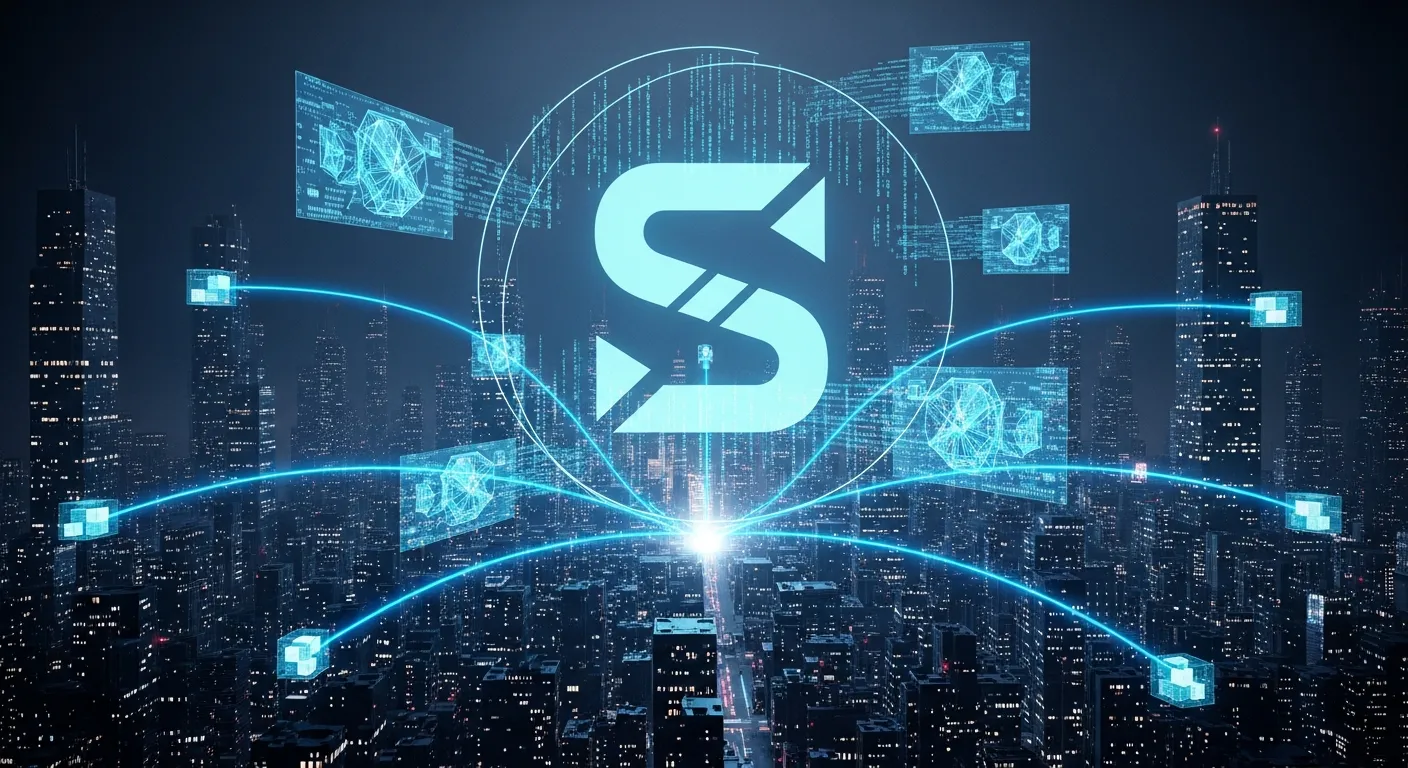Sui, an up-and-coming Layer-1 blockchain focused on massive throughput and scalability via 'parallel transaction execution,' has captured the attention of the crypto community. Developed by former Diem (Facebook) team members at Mysten Labs, the network introduces an 'object-centric' approach to blockchain that has the potential to redefine industry standards. As of September 15, 2025, the SUI token is fluctuating around $1.45, a price consolidation at a high range that raises a critical question: Can Sui deliver on its early promises, genuinely rival fierce competitors like Solana, and become a dominant platform in the future, or will it remain a fleeting shooting star?
Technical Innovation: Parallel Execution and the Move Language
Sui’s fundamental advantage lies in its technical architecture. Unlike traditional models that process transactions sequentially, the network utilizes a 'parallel execution' mechanism. This capability allows Sui to process transactions that do not affect the same objects simultaneously. This has resulted in a dramatic increase in Transactions Per Second (TPS) throughput, with tests recording up to 297,000 TPS, severely challenging traditional networks on scalability.
* Move Programming Language: The core of Sui is the Move programming language, originally developed by the Diem team. Move focuses on digital asset ownership and security, specifically designed to prevent many common attack vectors in smart contracts. This object-centric approach makes the development of complex financial applications and blockchain games safer and more efficient.
* Latency Reduction: Sui’s high processing speed and efficient consensus mechanism minimize transaction latency, making it an ideal platform for high-frequency finance and smooth user experience in gaming.
DeFi Ecosystem Growth and Market Metrics
Since the start of the year, SUI’s price has moved from approximately 1.10 to above 1.40. This price appreciation is supported by significant growth in ecosystem metrics:
* Total Value Locked (TVL): The Total Value Locked in Sui DeFi has reached $1.8 billion, representing a robust 42% growth in the last quarter. Core protocols like Navi Protocol and Cetus have doubled trading volumes, signaling a maturing DeFi ecosystem.
* On-Chain Activity: Daily active addresses have reached a new high of approximately 450,000. This indicates increasing genuine user engagement with Sui applications. The staking rate is over 70%, which secures the network and reduces the circulating supply.
* Market Valuation (MVRV Z-Score): Sui’s MVRV Z-Score is at 1.3. This value suggests that the token is relatively undervalued compared to its realized network value, indicating significant runway for growth without entering the overheated zone.
This velocity in TVL growth positions Sui as a serious contender to Ethereum’s Layer 2 solutions and other high-speed Layer 1 networks.
Focus on GameFi and Adoption in Asia
A strategic fundamental advantage for Sui is its focus on the GameFi and Non-Fungible Token (NFT) sectors. The Move language is specifically tailored for securely managing in-game assets, providing a competitive edge in this market.
* SuiPlay: Projects like SuiPlay have attracted millions of users, and Sui’s NFT trading volume in Asia, a critical market for gaming, has reached $600 million. This early adoption in Asian markets solidifies Sui as a major hub for the Web3 economy in the region.
* Long-Term Potential: Analysts predict that the focus on GameFi and social platforms could push SUI's price potential to $3 by 2026, provided this adoption trend is sustained.
Structural Risks and Market Sentiment
Despite the technical advantages, Sui, as a young platform, faces structural challenges and market risks:
* Technical and Competitive Risks: Sui faced Distributed Denial-of-Service (DDoS) attacks in its early stages, though the development team responded nimbly. Competition with Layer 1 platforms like Solana and proven Ethereum Layer 2s (like Optimism) is intense.
* Validator Centralization: There are criticisms regarding the relative centralization of validators (around 100 active nodes). However, the continuous increase in validator diversity and community participation gradually mitigates this risk.
* Market Sentiment: Sui’s Fear & Greed Index is at 63, which is in the 'moderate greed' range, positioning the market for sustained moves. Social discourse on X and Discord emphasizes technical merits like parallel execution and Zero-Knowledge (ZK) proofs, indicating a technically savvy community.
Investment Strategy and Long-Term Outlook
Sui’s fundamental status on September 15, 2025, suggests a high-growth asset underpinned by unmatched infrastructural innovation. Its ability to solve the scalability problem through parallel execution makes it a strategic investment.
Practical Strategy:
* Accumulation Point: Investors should strategically accumulate near key support levels, such as 1.30. If the price falls below 1.30, the $1.10 range could be a strong buying opportunity.
* Price Targets: Analysts predict SUI will reach the 1.80 to 2.20 range by the end of 2025, provided the uptrend is maintained.
* Risk Management: Due to its nature as a new Layer-1, a small (high-risk) allocation to SUI and the use of stop-loss orders in case of a break below key supports are recommended. The primary focus should be on monitoring TVL growth and GameFi adoption.
In conclusion, Sui is on the verge of entering a new phase of growth driven by its technical innovations. Success in this market hinges on the network's ability to maintain stability and convert raw speed into institutional-grade reliability. Sui is no longer a newcomer; it is a platform with the potential to dominate crucial Web3 sectors.
